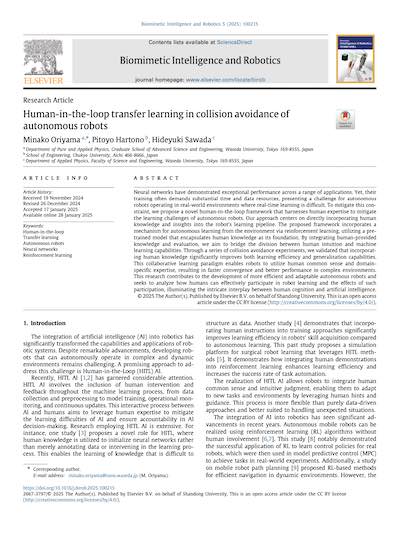Today's article comes from the journal of Biomimetic Intelligence and Robotics. The authors are Oriyama et al., from Waseda University, in Japan. In this paper they showcase a new Human In the Loop framework aimed at improving collision-avoidance in autonomous robots. Today's episode is hosted by Brett Beckermann.
DOI: 10.1016/j.birob.2025.100215


You must be an active Journal Club member to access this content. If you're already a member, click the blue button to login. If you're not a member yet, click the sign-up button to get started.
Login to My Account
Sign Up